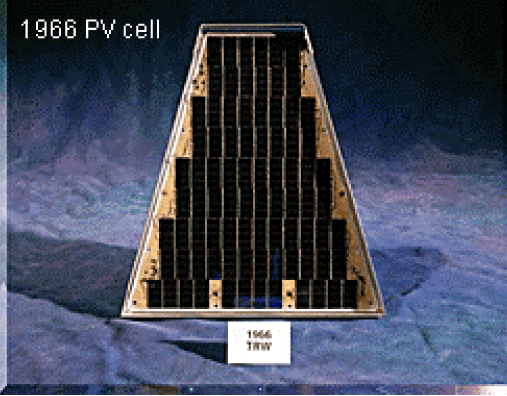| |
|
|
| |
|
| |
|
| |
|
| Definition |
|
| Photovoltaic
(PV) Cells convert sunlight directly into electricity. When sunlight
strikes a PV cell, electrons are dislodged, creating an electrical
current. |
|
| |
|
| The French physicist Edmond Becquerel
first described the photovoltaic effect in 1839, when he discovered
that certain materials produced small amounts of electric current
when exposed to light. Despite these observations, however, photovoltaic
cells remained a curiosity of science for the next three quarters
of a century. |
|
| |
|
| |
PV cells first started to be studied
seriously in the 1870s by Heinrich Hertz, who examined the photovoltaic
effect in solids such as selenium. Soon afterward, selenium PV cells
were converting light to electricity at 1 to 2 percent efficiency.
Selenium was therefore quickly adopted in the emerging field of photography
for use in light-measuring devices. |
|
| |
|
|
| |
A major step toward commercial application
of photovoltaic cells was taken in the 1940s and early 1950s, when
the Czochralski process was developed for producing highly pure crystalline
silicon. In 1954, scientists at Bell Laboratories used the Czochralski
process to develop the first crystalline silicon photovoltaic cell,
which had an efficiency of 4 percent. This launched the development
of photovoltaic cells for commercial and residential use. To see how
far this industry has come, one may compare these early cells with
modern ones: the earliest PV devices converted about 1 to 2 percent
of sunlight energy into electric energy, whereas the PV cells of today
attain efficiencies of 7 to 17 percent. |
|
| |
|
|
| |
The first PV cells were originally
developed for use in space, where repair is extremely expensive if
not impossible. PV still powers nearly every satellite circling the
earth because it operates reliably for long periods of time and requires
virtually no maintenance. |
 |
|
| |
|
|
| |
The efficiency of a photovoltaic cell
is measured by its conversion efficiency, or the proportion of sunlight
energy the cell converts to electrical energy. This is very important
to the viability of the PV industry, as improving this efficiency
makes PV energy competitive with that generated by fossil fuels. |
|
| |
|
|
| |
|
|
| |
|
|


